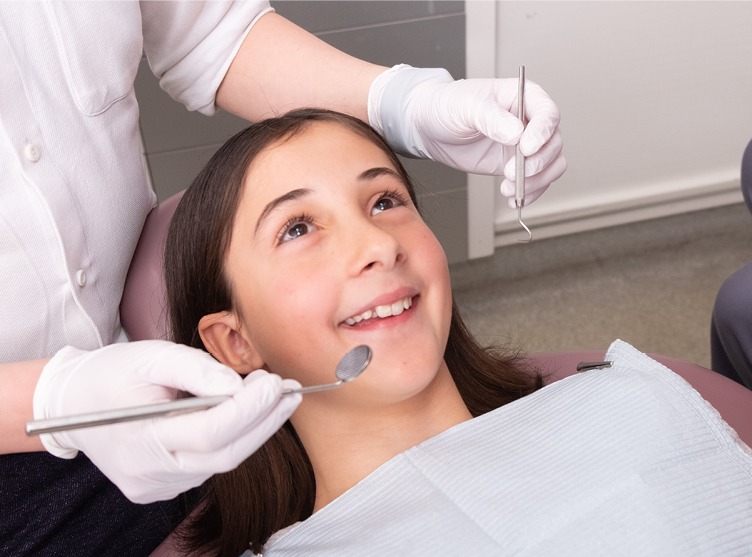Not known Facts About Legacy Orthodontics
Not known Facts About Legacy Orthodontics
Blog Article
The Basic Principles Of Legacy Orthodontics
Table of ContentsGetting My Legacy Orthodontics To WorkThe 8-Second Trick For Legacy OrthodonticsIndicators on Legacy Orthodontics You Need To KnowHow Legacy Orthodontics can Save You Time, Stress, and Money.7 Easy Facts About Legacy Orthodontics Explained
In addition, we provide adjustable treatment schedules, flexible settlement alternatives and a fun, delightful experience.An orthodontist is a dental expert trained to diagnose, prevent, and deal with teeth and jaw abnormalities. Orthodontists function with people of all ages, from children to adults.
Malocclusion, or misaligned teeth, can bring about dental concerns, including dental cavity, gum disease, and difficult or agonizing chewing. But not everyone is birthed with straight teeth. If you have a poor bite or large rooms between your teeth, you might desire to get in touch with a dentist concentrating on orthodontic care.
An Unbiased View of Legacy Orthodontics
( Picture Credit History: DigitalVision/Getty Images) Orthodontists make use of taken care of and detachable dental tools, like braces, retainers, and bands, to alter the position of teeth in your mouth. Orthodontic treatment is for oral abnormalities, including: Jagged teethBite issues, like an overbite or an underbiteCrowded teeth or teeth that are also much apartJaw misalignmentThe objective of orthodontic therapy is to improve your bite.
While you might believe of orthodontists as primarily for youngsters or young adults who need braces, they can remedy oral problems at any age. Orthodontists go to university, oral college, and orthodontic college.
All orthodontists are dental practitioners, yet not all dentists are orthodontists. Orthodontic residency programs use extensive, concentrated guideline for oral specialists. They concentrate on two areas: How to appropriately and safely move teeth Exactly how to effectively lead growth in the teeth, jaw, and faceOnce an orthodontist has completed training, they have the option to end up being board accredited.
Top Guidelines Of Legacy Orthodontics
Malocclusion leads to tooth overcrowding, a misshapen jaw, or uneven bite patterns. Malocclusion is usually treated with: Your orthodontist affixes metal, ceramic, or plastic square bonds to your teeth.
Some people require a headwear to help move teeth right into line with stress from outside the mouth. A retainer is a personalized device that keeps your teeth in place.
They can create added space in the mouth without having to pull teeth. Orthodontists use cables, medical screws, or plates to sustain your jaw bone.
You might require to see an orthodontist if you have: Crowding or otherwise sufficient space for every one of your teethOverbite, when your upper teeth come over your bottom teethUnderbite, when your bottom teeth are also much forwardSpacing or concerns with gapsCrossbite, which is when your top teeth fit behind your bottom teeth when your mouth is closedOpen bite or a vertical gap between your front bottom and upper teethMisplaced midline, when the center of your base and top teeth don't line up Fixing a dental malocclusion can: Make attacking, eating, and speaking easierImprove the proportion of our face and your total appearanceEase discomfort from temporomandibular joint conditionsSeparate your teeth and make them much easier to clean up, helping prevent tooth degeneration or dental caries It's usually a dental practitioner a knockout post that first notifications misaligned teeth during a regular examination.
The Best Strategy To Use For Legacy Orthodontics

During your very first orthodontic assessment, you'll likely have: An oral examPhotos taken of your face and smileDental X-raysPanoramic (360 level) X-rays of your face and headImpressions to produce molds of your teethThese examinations will help your orthodontist understand how to continue with your treatment. invisalign. An orthodontist is a dentist who's had training to treat your teeth and jaw
Orthodontists might do surgery, exams,X-rays,and even more to assist you achieve a much more comfy, healthier smile. An orthodontist is focused on your bite, so something like a damaged tooth would be handled by a dentist. Orthodontists are dental experts yet not all dental professionals are orthodontists. Orthodontists are concentrated on your bite, or the way your teeth fit with each other, and the straightness of your teeth.
Ever before questioned how celebrities always appear to have completely straightened teeth? Orthodontists are dental specialists who focus on remedying abnormalities in the teeth and jaws.
The 5-Second Trick For Legacy Orthodontics

, orthodontists have a varied toolkit at their disposal. These tried-and-true braces make use of a system of braces bound to the teeth and attached by cords.
Clear aligners, like Invisalign, are a prominent alternative for patients looking for a more discreet therapy option. These detachable trays are personalized to progressively shift the teeth's setting. Headgear may be used together with braces or aligners to apply additional targeted pressures, specifically for fixing jaw inconsistencies. In situations of slim jaws, palatal expanders can be utilized to produce room for appropriate tooth alignment.
Report this page